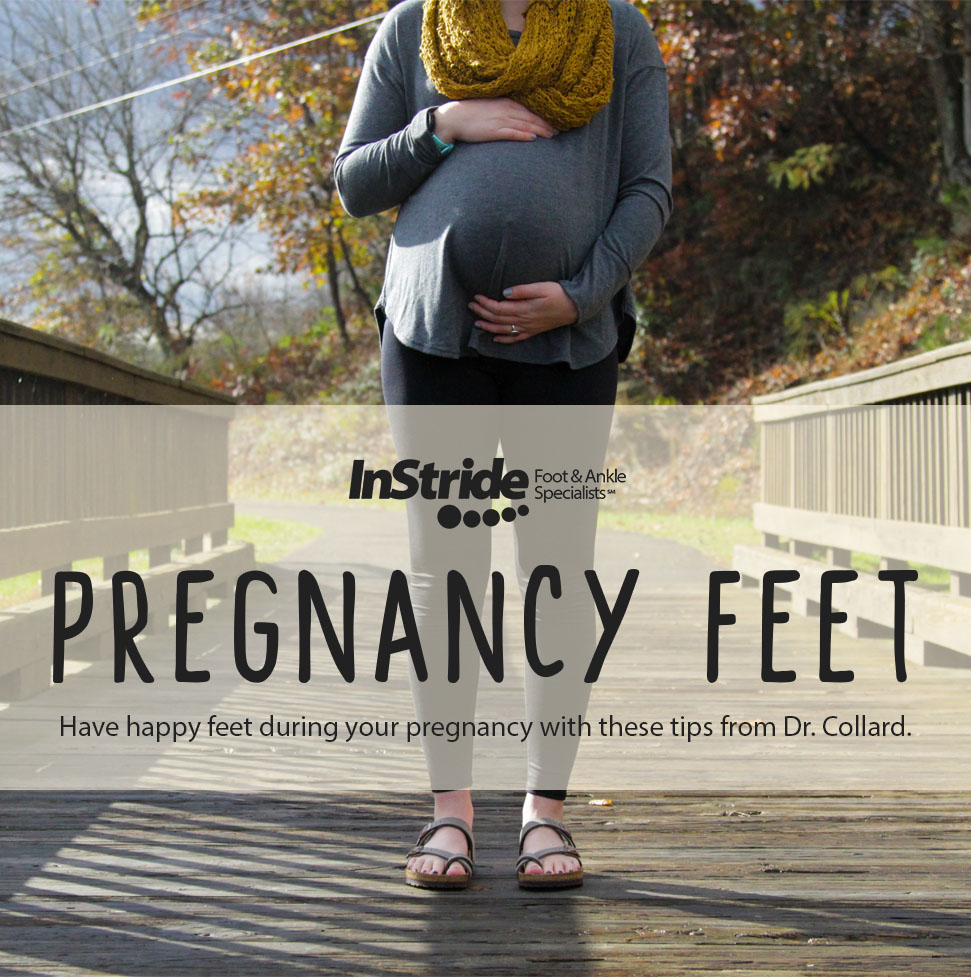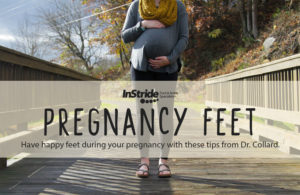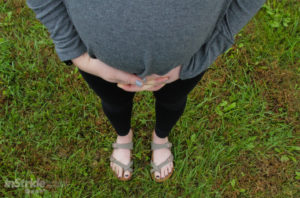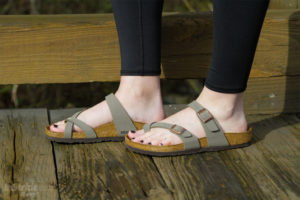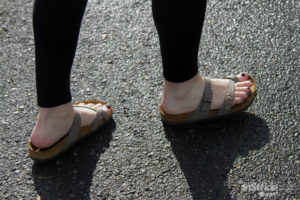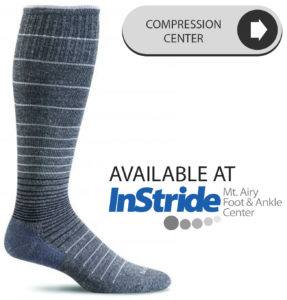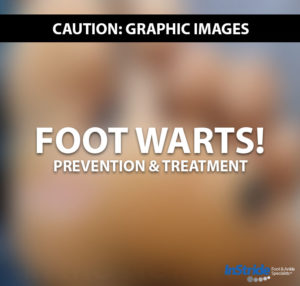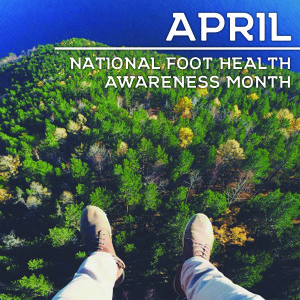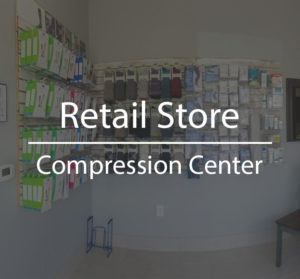Pregnancy Feet
David Collard DPM MHA
Many changes happen to a woman’s body when she is pregnant. Feet are not exempt from these changes, though those changes are often overlooked! We see a variety of different foot problems in our clinic, but one of them that we don’t see very much, but which we have received numerous questions about in social settings, is about foot pain and discomfort during pregnancy. I suspect that expectant mothers already have so much going on during that time that their feet get neglected. Out of sight, out of mind. A bad joke, I know, but the pain that some experience is no laughing matter!
So let’s run down a few things about your changing feet and steps you can take to feel better and worry about more important things, like that little one you’re carrying.
Weight.
Eeeek! Hold on, this is not about making you feel bad. I’m a guy and I’m the last person who should be commenting about a pregnant woman’s weight. I know. But it is important when we think about the impact that it has on your feet. They need more support than they ever did before. One of the leading causes of the pain is a sudden increase in weight. I don’t bring this up to make you feel bad about your body, but to encourage you to take a good look at all the shoes in your closet. Those cute little flats or flip flops that you loved so much before are now not giving you the support that your feet are begging for, and may now be your worst enemy.
Our feet adapt amazingly well to slow changes in weight and activity. Put on a few pounds each year or slowly increase your running mileage each week, and your feet will usually adapt and strengthen up as you go. But rapid increases in weight or activity, like what happens with pregnancy, or in deciding you are going to train for a half marathon in a month, will put a tremendous load on them. In the running example, you are likely going to get hurt, whereas with pregnancy, you are going to ache.
So you are probably thinking “ok, no flimsy shoes without an arch. I got it.” But let’s dive a bit deeper.
Laxity.
During pregnancy, the hormones in the body are doing an amazing dance to make sure the baby is developing and everything is ready for delivery. You probably don’t feel like dancing at this point, but part of the purpose of all those chemical changes is to loosen up the ligaments to prepare for delivery. This causes the the curve of the back to become more pronounced, and it can also loosen up joints all over the body.
The foot is made up of 26 bones. 26! All of those bones have ligaments holding them in place so they can work together and get you where you need to go. But loosening all of them up can have major effects on the arch, and even the length and width of your foot. That’s right, your feet do get bigger! (Something else getting bigger. I’m sorry.) This can make the foot unstable and change the way you walk, even apart from what that baby bump is doing.
All of this can lead to a broad gait (feet further apart), and you may feel like your shoes don’t fit anymore. You need to choose a shoe that is going to support all of these bones, joints, and the arch of your foot. In short, choose a shoe that has a stiffer sole that you can’t fold in half like a taco, and which has an arch support and enough room.
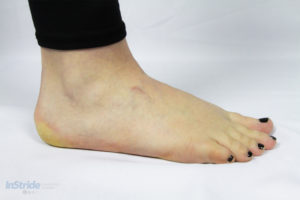
[The mark on top surface of foot derived from swelling and sandal buckles.]
Swelling and cramping.
Your legs and feet will swell the further along you get. You may feel that your feet are not only longer and wider, but that they are also “puffier” from swelling. They may even start cramping. Circulation in the legs goes down because of the pressure that the baby places on the blood vessels coming back from the feet and legs. Because of this, some of that water in the blood gets left behind and stays in the feet and legs. This swelling is often referred to as “edema” and is often noticed more with the first pregnancy, usually goes down postpartum, but sometimes can last much longer.
Wearing compression stockings is one great way to help get the swelling out. You may not have to go to a very high compression either. There are light over-the-counter compression socks that are easier to get on and can usually do the job, and believe it or not there are some more fashionable options these days.
Also, staying active is a great way to improve circulation in your legs to reduce swelling and cramping. Regular walking, stretching, staying hydrated, massaging cramping calves and low-impact aerobic exercise can often help.
BE SURE to talk to your OB before starting any exercise program.
Side Note:
Cramping in legs can sometimes be a symptom of a blood clot. Although rare, symptoms of blood clots include persistent pain, swelling, possible redness, warmth and tenderness. If you notice any of these symptoms or suspect you have a blood clot, you should contact your healthcare provider.
Let’s sum it up.
Your pregnancy feet are going to have a hard time keeping up with all of the changes going on in your body. Avoid going barefoot or wearing flats and other shoes that don’t support your feet. You need to support your feet with shoes that have a solid, sturdy sole and arch support, and which allow for size changes. Stretch, hydrate, and consider light compression stockings. After talking to your doctor, you may also likely find many benefits in regular exercise too. Do your feet a favor while you are out shopping for pregnancy clothes and consider getting some “pregnancy shoes,” too.
If you or someone you know is experiencing “pregnancy feet,” we are here to help. Please contact us and schedule an appointment.
References:
1. Ponnapula, Boberg. Lower Extremity Changes Experienced During Pregnancy. Journal of Foot and Ankle Surgery. Sept/Oct 2010; 49(5): 452-458.
2. Ritchie, Joseph. Orthopedic Considerations During Pregnancy. Clinical Obstetrics and Gynecology. June 2003; 46(2): 456–466.
3. Olson D et al. Exercise in Pregnancy. Current Sports Medicine Reports. May/June 2009; 8(3): 147-153.
4. Krajcar J, Radakovic B, Stefanic L. Pathophysiology of venous insufficiency during pregnancy. Acta Med Croatica. 1998; 52(1):65–69.
5. Fitzgerald CM, Segal NA. Chapter 2: Hormonal Influence on the Neuromusculoskeletal System in Pregnancy. Musculoskeletal Health in Pregnancy and Postpartum. Springer International Publishing Switzerland. 2015.
6. Garten, Alison. Recognizing The Causes Of Venous Insufficiency In Women. Podiatry Today. Sept 01, 2016. podiatrytoday.com
7. Foot Changes During Pregnancy. American Orthopedic Foot and Ankle Society. AOFAS.org
Thank you to our medical assistant, Amelia, for being an amazing model!

